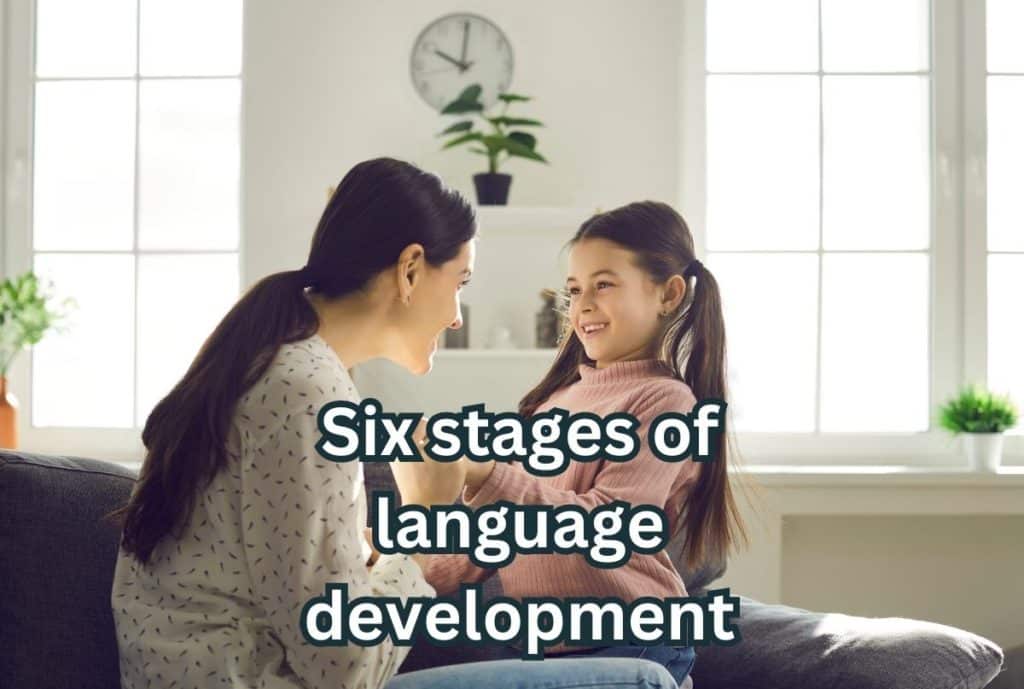
Language development in children is the process through which we gain the ability to understand and communicate through speech.
Most parents can hardly wait for their baby to say its first word. This usually happens between nine months and a year. From about two years, the child should be able to use simple phrases, and by three, they should be able to use complete sentences. By four, they should be fully able to talk, although he may still make grammatical errors. By five, they should have acquired basic language.
A key milestone
Undoubtedly, language development is one of the key milestones during early childhood development. A significant part of a child’s social and intellectual development hinges on reaching this milestone.
There is a strong relationship between a child’s level of language development (comprehension and use of words in two- or three-word sentences) at age two and academic results at school. Language development lays the foundation for the reading and writing skills in children as they enter and progress through school.
According to Wood, language acquisition takes place in six consecutive stages:
1. Prelinguistic stage
The child is in a pre-speech stage during the first year of life. Developmental aspects related to speech include the development of gestures, making adequate eye contact, sound repartee between infant and caregiver, cooing, babbling, and crying. Examples of such prespeech sounds would be dadadada, mamamama and waaaah.
2. Holophrase or one-word sentence
The child usually reaches this phase between 10 and 13 months. Although the child tends to utter a single word at a time, its meaning is supplemented by the context in which it takes place and nonverbal cues. An example of such a one-word sentence would be a child leaning over the edge of his cot and pointing to his bottle while laughing and saying “botty” in a commanding way. An adult could interpret the child’s holophrase as meaning, “Give me my bottle immediately (so that I can throw it over the edge of the cot again, and you can pick it up).” Another example would be “Dada,” which could mean “Daddy, please come to me.”
3. Two-word sentence
By 18 months, the child reaches this stage. Their “sentences” now usually comprise a noun or a verb plus a modifier. This enables the child to formulate a sentence that may be either declarative, negative, imperative, or interrogative. Examples of such “sentences” are:
“Doggy big” (declarative)
“Where ball” (interrogative)
“Not egg” (negative)
“More sugar!” (imperative)
Once again, if the situation and nonverbal communication support the two-word sentence, it could have quite a complex meaning.
4. Multiple-word sentences
The child reaches this stage between the age of two and two and a half. Grammatical morphemes in the form of prefixes or suffices are used when changing meanings or tenses. Furthermore, the child can now form sentences with a subject and a predicate. Using the examples which were listed in the previous stage, the sentences could now be the following:
“Doggy is big”
“Where is ball?”
“That is not egg”
“I want more sugar”
“I catched it”
“I falling”
Ironically, the linguistic errors in the last two examples clearly indicate that the underlying grammatical principle was understood. The child’s sentences are still telegraphic, although they may be quite long. An example of such a multiple-word sentence is: “People mustn’t walk street – people must walk pavement.” This specific sentence was used by a very bright 18-month-old child, which implies that these language developmental levels can be reached earlier or later than was indicated above. Therefore, the extent and quality of the mediated language experience the child receives are of the utmost importance.
5. More complex grammatical structures
Children reach this stage roughly between two and a half and three years of age. They use more intricate and complex grammatical structures, elements are added (conjunction), embedded and permuted within sentences, and prepositions are used. Wood gives the following examples in this regard:
“Read it, my book” (conjunction)
“Where is Daddy?” (embedding)
“I can’t play” (permutation)
“Take me to the shop” (uses preposition of place)
6. Adult-like language structures
The five to six-year-old child reaches this developmental level. Complex structural distinctions can now be made, such as by using the concepts “ask/tell” and “promise” and changing the word order in the sentence accordingly. Examples are:
“Ask her what time it is.”
“He promised to help her.”
Start early
It is never too early to begin encouraging language development. Parents should offer their children speaking and listening opportunities through everyday conversation and practical activities.
Research has shown that parents who talk to their children, read to them, attentively listen and react to their chattering, gestures, and words provide their offspring a distinct advantage. More conversations between infant and parent result in better language development for the child.
Research also shows that parental input, especially in language development, eventually plays a more critical role in school readiness than the parent’s career, income, or status.
.

